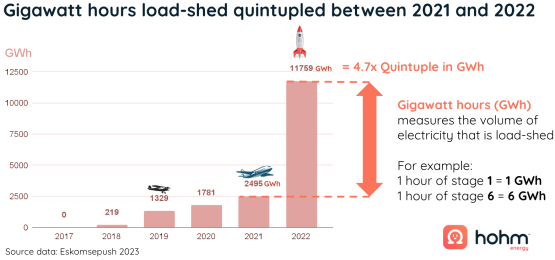South Africans have accepted the fact that load shedding is here to stay despite recent relief in the days leading up to the threatened national shutdown. Load Shedding is anticipated to worsen in the near to intermediate future. Although well-intentioned, initiatives such as appointing Electricity Ministers and declaring states of emergency are not anticipated to significantly reduce the need for load shedding within the next three years.
Having reached that point of acceptance, we can start asking the important question: now what? How can South Africans prevent load shedding from affecting their lives, jobs, and businesses?
The answer lies in powering our own homes and businesses wherever possible, with rooftop solar being the easiest way of doing so. The solar incentives announced in the recent Budget Speech will go a long way to assisting home and business owners to take care of their own energy needs, and potentially provide power for the rest of Mzansi as well.
Why taking the rooftop solar option is such an important step
A positive action to come from the presidency is that residences and businesses are being incentivised through tax incentives to get solar. It is one of the quickest ways to get power onto the grid simply by making it more affordable. You only have to look at the recent example of Vietnam, which added more than 9GW of rooftop solar in 2020 alone. By comparison, that is equal to 9 stages of daytime load-shedding and more than the combined output of Medupi and Kusile power stations, once they’re completed.
A brief look at how bad load shedding has become
Looking at the state of load-shedding in Feb 2023, the escalation has become eye watering. To begin with, between 2021 and 2022, there was an overall increase of five times the amount of load-shedding (4.7x to be exact), when measuring the amount of Gigawatt hours that was shed.
Looking at following graph provides a visual representation of the GWh load-shed escalation that took place over 1 year:
It is clear that last year was a “breakout” year in terms of the 5 year increasing trend of load shedding.

It is significant to note that we have experienced more GWh load-shed over Jan 2023, than in 2021 combined. That is a 12x times increase over a 12 month period, one multiplier for every month. The latest graph shows load shedding by mid May is equal to ¾ total load shedding experienced last year. The time has clearly come where Eskom can no longer be relied on for consistent affordable electricity, home and business owners need to take care of their own energy needs.
Unpacking the incentivised solar solution
During the 22nd Feb Budget Speech, Finance Minister Enoch Godongwana announced solar panel tax incentives for individuals and businesses. These incentives reduce the overall cost of a solar system and represent a saving to the consumer. They will most likely be the best offered by the government, as the trend worldwide is to offer the best incentives first and then scale them back after the “first-movers” grab hold of the opportunity. 2023 is thus the best year to install your solar solution.
Rooftop solar systems no longer require a significant capital outlay. There are various solar services and financing options available to homeowners and businesses.
With the new incentives, the payback period for home solar systems is around 4 – 5 years. Consumers are then looking at an overall return on investment of up to three times their money back, depending on how much the price of electricity escalates.
As load shedding won’t end soon, residents must work around power shortages or be freed from them. Solar is best in 2023 because of tax benefits and financing choices.
Matthew Cruise, Hohm Energy.

